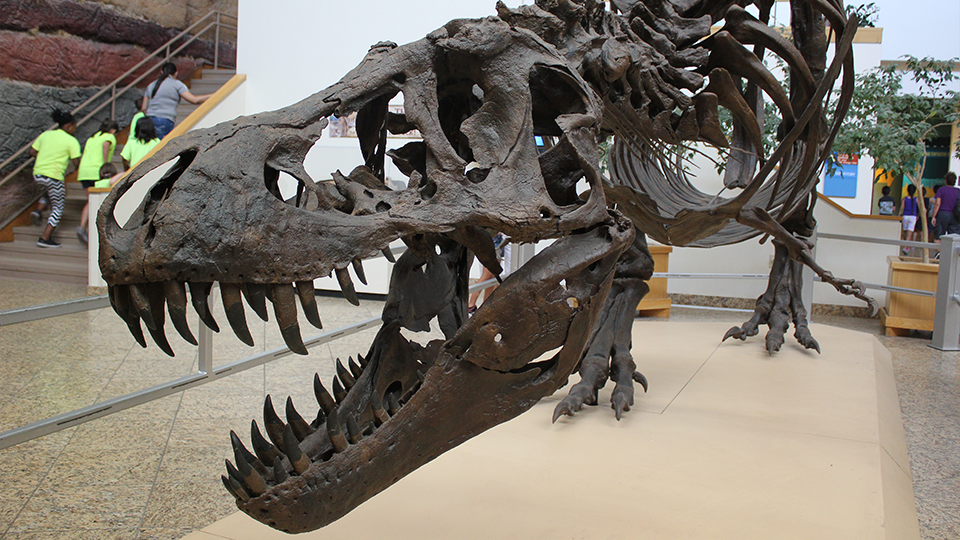
The issue with the $27.5 million sale of Stan the T. rex
The sale of the actual fossilized remains of a remarkable specimen of Tyrannosaurus rex, known as Stan, on October 6th for $27.5 million ($31.8 million after fees) at Christie’s Auction House, has set an unfortunate precedent. We understand that the sale of this fossil is the result of complicated legal and family issues and that this was not a decision made by the Black Hills Institute. Sales like these present numerous challenges to science, equity, and the intersections of both—read on to learn about the history of Stan, why the sale increases inequity, and what the future could hold for fossil sales.
Loss to science
Stan has already been incredibly helpful in understanding this iconic extinct species. These fossil remains have been published in numerous scientific studies, as the bones were to be curated at the Black Hills Institute (Hill City, South Dakota) for the foreseeable future with the inventory number ‘BHI 3033’.
However, an anonymous buyer will be the sole owner of Stan, meaning no further scientific research can be conducted using this iconic fossil. It also means that previously published work on Stan can no longer be verified independently by other researchers. While it is true there are other T. rex specimens that are held by museums, the ancient population is still not well known, and having reasonably complete skeletons like Stan helps enormously with understanding how these animals functioned in their ecosystem.
Loss to the public
Tyrannosaurus rex is easily the most popular, recognized and beloved extinct animal. The love of paleontology and even natural sciences often begins for children with a T. rex fascination. These impressive creatures belong to everyone.
Had this fossil skeleton found its way to a museum, these could be appreciated and valued by a large swath of the public, and even further enjoyed by the world through various media platforms, much like SUE the T. rex at the Field Museum. Stan will no longer inspire future generations of scientists and nature enthusiasts.
Deepening inequity
Economic disparities in America are widespread, due in large part to our reliance on individual ownership and wealth accumulation. Placing Stan up for auction essentially prevented large portions of the US population from being able to see or study it. How do we inspire the next generation of dinosaur lovers and science enthusiasts if the most spectacular specimens are not in the public domain?
The very nature of the sale limits the number of participants to the extremely wealthy, completely preventing organizations with far fewer resources like museums and universities to even consider purchasing the specimen. Even well-funded museums do not have the resources to purchase and study specimens that are so expensive. Moreover, this comes at a time of enormous economic hardship for the country, when all museums are struggling to keep operations running. The Science Museum of Minnesota is actively working to undo systems of injustice and inequity and the private ownership of important fossils makes the journey even more difficult.
Creating new problems
Most troubling of all is that the high price of this fossil will only act to encourage this to happen again.
Arguments have been made that commercial fossil collecting can be beneficial to science as it adds a financial incentive for people to search for fossils leading to more discoveries. However, prices being prohibitively high for specimens with substantial scientific value is counterproductive for research. Many paleontologists now fear the further loss of important scientific specimens because of their high monetary value.
Moving foward
We sincerely hope that this new owner remains a good steward of this exceptional specimen and that these remains eventually find their way to a science museum where they can be studied and appreciated. As a country, we should not simply have to hope that our history is treated well, but until legislation dictates the handling of scientifically valuable specimens, this is the reality.
What can you do? Contact your representatives and support your favorite local science museum. If that’s us, you can show your support for collections and scientific research by donating or becoming a Member. Every dollar funds groundbreaking research, education access programs throughout Minnesota, exhibit development, and so much more.